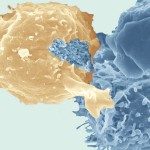Link to Pubmed [PMID] – 17607781
J. Med. Virol. 2007 Sep;79(9):1261-9
In the USA and West Europe, nearly 80% of HIV-1-infected adults, experiencing virologic failure, harbored virus strain resistant to at least one antiretroviral drug. Limited data are available on antiretroviral drug resistance in pediatric HIV infection. The aims of this study were to analyze prevalence of HIV-1 drug resistance and to identify risk factors associated with resistance in this population. Prevalence of genotypic resistance was estimated retrospectively in treated children who experienced virologic failure (with HIV-1-RNA > 500 copies/ml) followed in Necker hospital between 2001 and 2003. Among 119 children with resistance testing, prevalence of resistance to any drug was 82.4%. Resistance ranged from 76.5% to nucleoside reverse transcriptase inhibitor (NRTI), to 48.7% to non-nucleoside reverse transcriptase inhibitor (NNRTI) and 42.9% to protease inhibitor (PI). Resistance to at least one drug of two classes and three classes (triple resistance) was 31.9 and 26.9%, respectively. Resistance was not associated with geographic origin, HIV-1 subtype, and CDC status. In multivariate analysis, resistance to any drug remained associated independently with current low viral load and high lifetime number of past PI. Triple resistance was independently associated with the high lifetime number of past PI and with gender, particularly among children aged 11 years old or more with a prevalence seven times higher in boys than in girls. In conclusion, antiretroviral resistance is common among treated HIV-1-infected children and prevalence was similar with those observed in adult population in the same year period. However, adolescent boys seem to be at greater risk.

